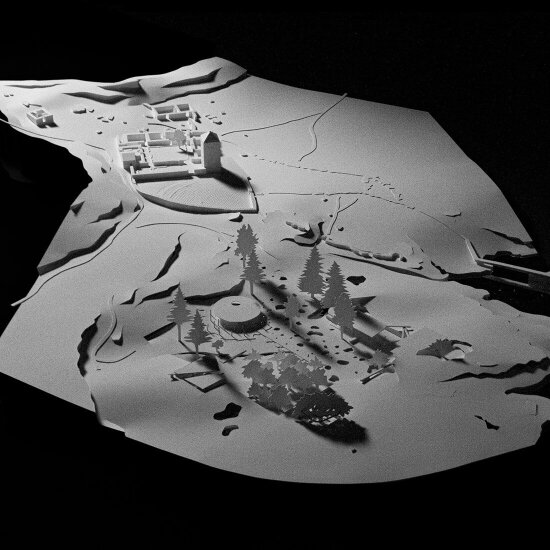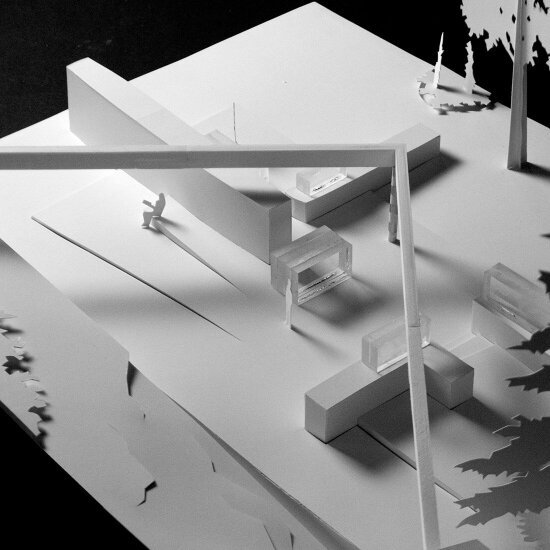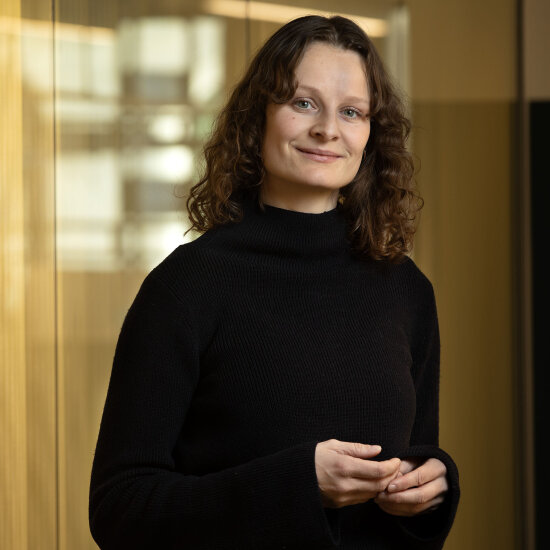The island of Selja, located in what was previously the county of Sogn og Fjordane, was Western Norway’s first episcopal residence towards the end of the 1000s. The harbour was a hub for international shipping, and the monastery, which is dedicated to Saint Sunniva, was a meeting-point of Christians from far and wide. Selje Monastery thus became an important part of the Norwegian and global knowledge network established between 1000 and 1500.
Archaeology for all
In his diploma dissertation from The Oslo School of Architecture and Design, Miguel Hernández Quintanilla presents a visionary project where he proposes that archaeological digs, exhibitions and teaching can be part of the development of a new pilgrimage centre on Selja.

Photo: Miguel Hernández Quintanilla
Quintanilla thinks that greater knowledge of the monks’ work with seeds, plants and cultivation methods may help us to become a more self-sufficient and sustainable society. He also thinks that pilgrimage tourism can provide considerable value to local communities, research and art.
A modern twist on the monastery garden
For that reason, Quintanilla proposes the development of a holistic pilgrimage centre on Selja. In his dissertation he explains how the centre might function as a meeting-place, research centre and learning arena for agriculture, archaeology and history.
His preliminary work is impressive. He has trawled through articles, archives and local sources looking for information of how the old monasteries functioned. With the aid of design methodology, he has created a comprehensive archive of relevant plants and cultivation techniques and drawn and designed plans and models. He has also carried out thorough investigations on Selja.


Inspired by the monks’ productive monastic garden, Quintanilla proposes the creation of an extensive garden on the island. The garden would be situated in the centre of an area of archaeological digs, and comprise a series of pavilions, for example a kitchen, library and chapel. In this way Quintanilla wishes to draw a link between archaeology, history, architecture and botany.
A tourism strategy with added value
Thousands of tourists come to Selja every year. Quintanilla feels the cultural heritage ought to form a major part of the tourism strategy. A bold and ambitious garden project could inspire visitors to participate in research-related and artistic projects on the site. In addition, the project will be able to provide further knowledge about the history of the site and boost local pride.
The Gardens of Saint Sunniva: Proposal for a pilgrimage centre and learning arena for agriculture, archaeology and history on the island of Selja
By: Miguel Hernández Quintanilla, Master of landscape architecture, The Oslo School of Architecture and Design
Design disciplines: Landscape architecture, Heritage and conservation
Recipient of the DOGA Award
This project has received the DOGA Award for Design and Architecture for its outstanding qualities and for showing how strategic use of design and architecture create important social, environmental and economic value.
These are three reasons why this is an exemplary project:
- Revival of a forgotten cultural heritage
Monasticism (life in monasteries) is an overlooked chapter in Norwegian cultural heritage, and increased knowledge could contribute greatly to Norway becoming more self-sufficient. The new monastery is a multi-cultural space where the local population and visitors can get together and learn about the cultural landscape and ancient cultivation methods.
- Links tourism to research and art
Thousands of pilgrims come to the island of Selja every year. The project sees Selja’s tourism potential as an opportunity to promote research and creative expression.
- Involves the local community
The proposed design aims to involve the local community and users in the development of Selje Monastery. This will enhance the knowledge of the island’s history and thus build and support local identity.


